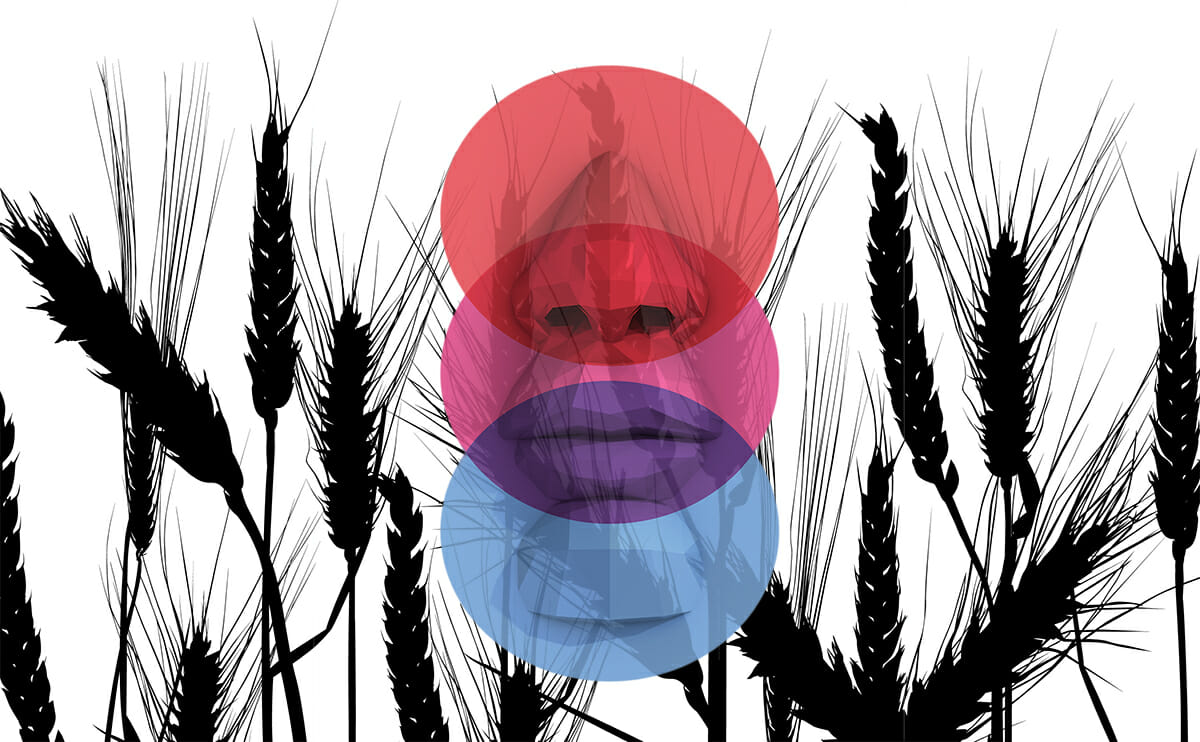The idea comes from Professor Jack Schultz at the University of Missouri, who earned a brief mention in Michael Pollan’s amazing article on plant intelligence in the New Yorker. Schultz, a chemical ecologist, pioneered some of the first studies of plant communication in the 1980s. He is now working to develop a mechanical nose a […]

The idea comes from Professor Jack Schultz at the University of Missouri, who earned a brief mention in Michael Pollan’s amazing article on plant intelligence in the New Yorker.
Schultz, a chemical ecologist, pioneered some of the first studies of plant communication in the 1980s. He is now working to develop a mechanical nose a farmer could use to pick up the chemical alarm bells of a crop under attack. If it works (which remains an if) farmers could apply pesticides with a high degree of precision.
The prospective technology depends on an understanding that plants, when faced with a stress, will release a bouquet of odors specific to that stress. “So if you are a tobacco plant,” says Schultz, “and caterpillar ‘A’ attacks, you emit one set of odors. If species ‘B’ comes along, you would emit another set.” A properly sensitive nose would be able to identify the plant or plants under attack and the identity of the attacker, all from the unique fingerprint of smells a plant spews into the air.
Humans aren’t completely foreign to plant signals. The smell of a freshly mowed lawn is a kind of plant communique, probably saying something along the lines of “WTF?!?!”
Gaining a richer picture of plant conversations takes an extremely precise nose, which humans lack, but dogs have. Vineyards in California contract dog trainers to search out invasive mealy worms. “So if you could duplicate a dog’s nose,” says Schultz, “you could see the world of chemical signalling. Us humans just aren’t attuned to that.”
“The more we think about how plants have their own devices to protect themselves,” explains Schultz, “the more you’d be able to use that to hopefully replace some artificial pesticide use.”
Other animals know bits and pieces of plant language, which is exactly why the plants might put out the signals in the first place. When a caterpillar starts munching on a corn crop, Schultz has found, the plant releases a beacon for wasps to take care of the problem.
The National Science Foundation has funded Schultz’s project with an Early Concept Grant for Exploratory Research (EAGER) because foundation sees it as a high-risk, high-reward project. What makes the project so risky is that no one has ever built a mechanical nose with the sensitivity to identify plants signals in the open air.
Schultz’s past laboratory studies have sealed plants inside glass containers to concentrate their odors for detection. The mechanical nose would need to be able to whiff much weaker signals, and, on top of that, pick out a handful of compounds in the air to gain enough information to convict the culprit behind a plant attack.
As of now, the nose he has developed with Professor Xudong (Sherman) Fan, a biological engineer at the University of Michigan, can detect odors at low enough concentrations, but has yet to be tested outdoors. When a prototype arrives next spring, Schultz expects to test it indoors among a grid of plants, some diseased and some healthy, before bringing it to real agricultural fields.
Even if the nose doesn’t fulfill it’s promise, many farmers are already taking advantage of the new science of plant communication. In Africa, a project called Push-Pull Agriculture protects cereal crops from the threat of stem-borer moths. Grasses planted around maize and sorghum “pull” the pests with the smell of what appears to be a tastier meal. At the same time, low-growing plants among the crops “push” the moths away with a different chemical compound.
With a proper understanding of plant communication, a farmer could start using signaling compounds for her own purposes. A light, odorous warning could induce drought resistance. Another would up a plant’s defenses against a certain kind of pest and yet another would call in insect body guards.
“The more we think about how plants have their own devices to protect themselves,” explains Schultz, “the more you’d be able to use that to hopefully replace some artificial pesticide use.”
In other words, understanding the chemical language of plants could cut operating costs and limit environmental impacts for farmers around the globe.
How do you say “right on” in plant compounds?
[mf_video type=”youtube” id=”zTQVLfG3sgM”]